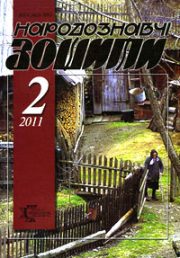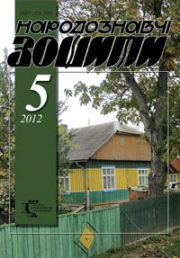The Ethnology Notebooks. 2017, 2 (134), 460—465
UDK 73.03:73.05
DOI https://doi.org/10.15407/nz2017.02.460
PLAYGROUND SCULPTURE: DEFINITION AND FEATURES OF THE GENRE
Hlibova Tеtiana, post-graduate student
Of Kharkiv State Academy of Design and Fine Arts
Mystetstv Street, 8, 61002, Kharkiv, Ukraine.
Contacts: E-mail: tim@ksada.org
Abstract. Terminological and semantic features of the concepts of «playground sculpture», «play sculpture», «public art» are considered, the relationship between the playground sculpture, gaming sculpture and public art is investigated, definition playground sculpture as one of the genres of contemporary sculpture is formulated, considered aesthetic and functional changes in the morphology of the genre of playground sculpture. Basic aesthetic features of playground sculpture are characterized. The features embedded playground sculpture in the urban architectural environment, allowing individualizing the urban environment, giving special symbolic place, are considered. It was revealed that created by a scenario design playground sculpture can contain multiple versions of the gaming action.
Keywords: play sculpture, art, public art, game script.
Received 16.02.2017
REFERENCES
Dzhenks, Ch. & Uvarovoj, M.V., Rjabushina, A.V. (per. s angl.) & Rjabushina, A.V. & Hajta, V.L. (Eds.). (1985). Jazyk arhitektury postmodernizma. Moskva: Strojizdat [in Russian].
Efremova, T.F. (2000). Novyj slovar’ russkogo jazyka. Tolkovo-slovoobrazovatel’nyj. Moskva: Russkij jazyk [in Russian].
Krauss, R. & Matveeva, A., Kistjakovskaja, K. & Obuhova A. (per. s angl.) & Miziano, V. (Ed.). (2003). Skul’ptura v rasshirennom pole. Moskva: HZh [in Russian].
Hjojzinga, J. & Sil’vestrova, D.V. (sost., predisl. i per. s ni-derl.) & Haritonovicha, D.Je. (komment., ukazatel’). (2011). Homo Ludens. Chelovek igrajushhij. Sankt-Peterburg: Izdvo Ivana Limbaha [in Russian].
Kvon M. Public art i identichnost’ gorodov. Retrieved from: URL: http://www.propublicart.ru/publication?id=11
EN1176 Playground Equipment Standard. Retrieved from: URL: http://www.rospa.com/playsafety/advice/en1176equipmentstandard/
Hassan I. Toward a Concept of Postmodernism (From The Postmodern Turn). Retrieved from: URL: http://occonline.occ.cccd.edu/online/swells/ Concept%20of%20Pomo.pdf






